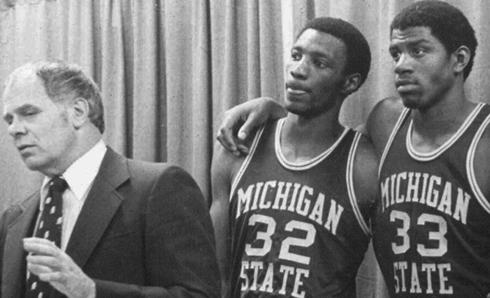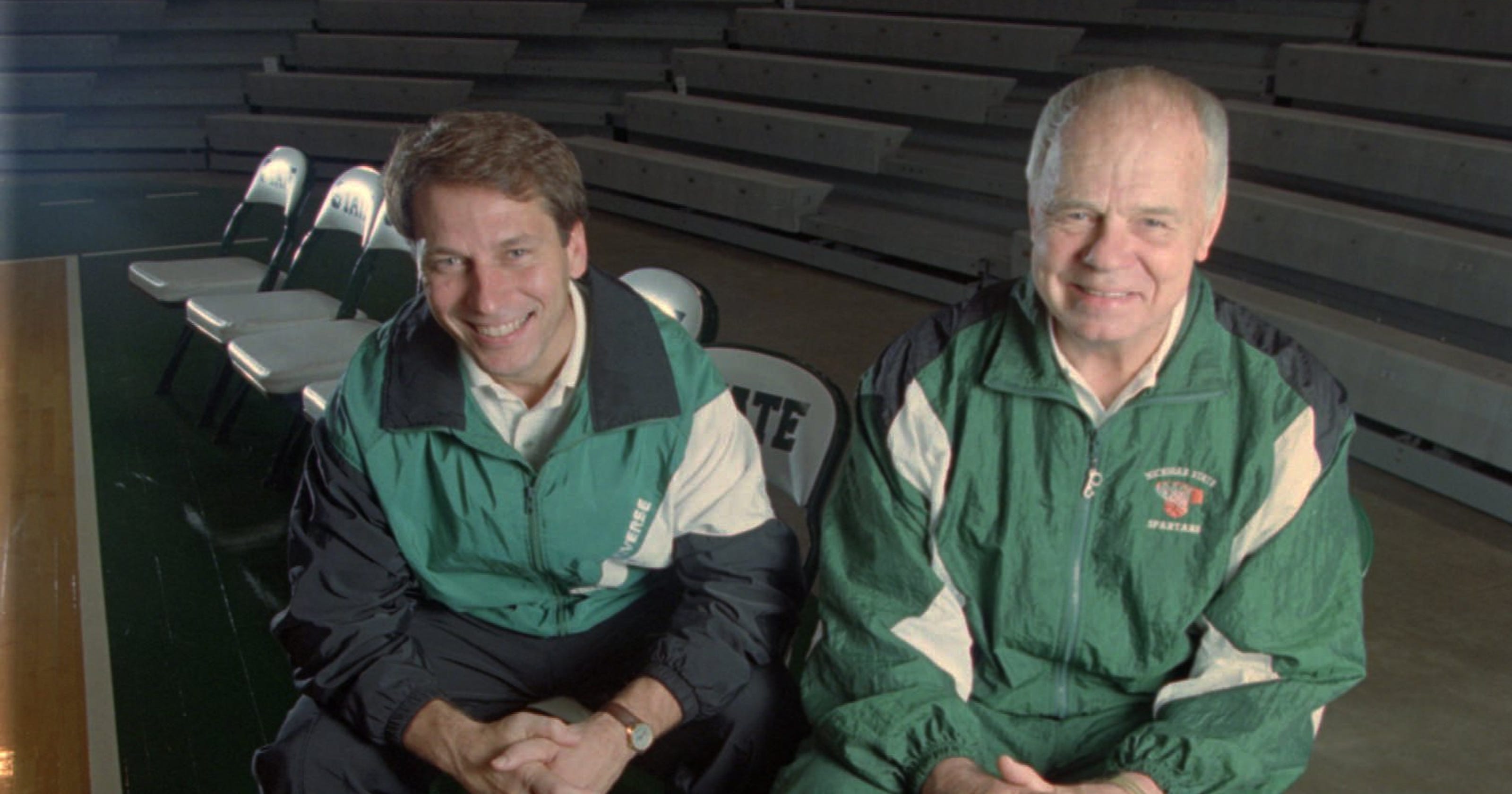George Melvin Heathcote was born on May 27, 1927 in Harvey, North Dakota. I can find no reference to where his nickname "Jud" came from. Both of his parents were teachers. His father, Marion Grant Heathcote, was a basketball coach, but died in a diptheria outbreak when George was 3. His mother, the former Fawn Walsh, moved with her son back to her hometown of Manchester, Washington, in the Seattle suburbs.
He became a 3-sport star at South Kitsap High School in Port Orchard, served in the U.S. Navy at the tail end of World War II and for a while thereafter, and went across the State to play basketball at Washington State University under head coach Jack Friel, for whom the court at WSU's Beasley Coliseum is named.
Heathcote stayed in Eastern Washington, and settled in Spokane, where he lived for the rest of his life. He coached at West Valley High School, and then as an assistant at WSU. In 1971, he was hired for his 1st collegiate head coaching job, at the University of Montana. In 1975, he got them their 1st Big Sky Conference Championship, and to the Sweet Sixteen of the NCAA Tournament, falling to John Wooden's last UCLA team.
That got Heathcote noticed, and in 1976, he was hired by Michigan State University. The timing of his arrival in East Lansing was great: Not only did MSU have Kirk Gibson to star in both baseball and football (winning the Big Ten title in 1978), but the basketball team had Greg Kelser and a big kid with a big smile, from neighboring Lansing: Earvin Johnson, who had already been nicknamed "Magic."
Together, in 1979, they got the Spartans only their 2nd trip to the Final Four (the 1st had been in 1957), and won the National Championship, beating Indiana State and their much-hyped forward Larry Bird in the Final at the Special Events Center (now the Jon M. Huntsman Center) on the campus of the University of Utah in Salt Lake City. It was the most-talked-about NCAA Final ever, is often credited with turning the Tournament into the modern "March Madness," and became the subject of Seth Davis' 2009 book When March Went Mad.
Jud Heathcote, Greg Kelser and Magic Johnson, 1979.
Magic had to switch from Number 33 to Number 32
with the Los Angeles Lakers, due to Kareem Abdul-Jabbar.
He led MSU to the Big Ten title in 1978, 1979 and 1990. He retired after the 1995 season, with a 418-275 record, 339-221 at Michigan State, and handed the reins off to Tom Izzo, his assistant since 1982 and his chief assistant since 1990. Izzo has added 7 Conference titles in the regular season, 5 in the Big Ten Tournament, 7 Final Four berths, and the 2000 National Championship.
Tom Izzo and Jud Heathcote
"No one cared more about the welfare of the game than Jud," Izzo said. "He was a coach's coach, and a mentor to many." In addition to Izzo and Johnson, this included Scott Skiles, one of his players who's coached in the NBA with Phoenix, Chicago, Milwaukee and Orlando; Tom Crean, who got Marquette into the Final Four and won a Big Ten title with Indiana; Kelvin Sampson, whom Crean succeeded at Indiana, won 3 Big 12 Tournaments and a Final Four berth with Indiana, and is now the head coach at the University of Houston; and Brian Gregory, who won an NIT title with Dayton and is about to begin coaching South Florida.
After retiring, Heathcote returned to Spokane. He went to home games of the city's Gonzaga University, having a monthly lunch date with coach Mark Few, and continued to watch Michigan State on TV and occasionally traveling there, admitting that he tended to second-guess coaching decisions he saw in TV games.
He died this past Monday, August 28, 2017, at the age of 90, having stayed active until the end. He was elected to the College Basketball Hall of Fame in 2009, but not to the main Basketball Hall of Fame in Springfield, Massachusetts. This oversight should be corrected in next year's election, and I hope it will be.
UPDATE: His final resting place is not publicly known.




No comments:
Post a Comment